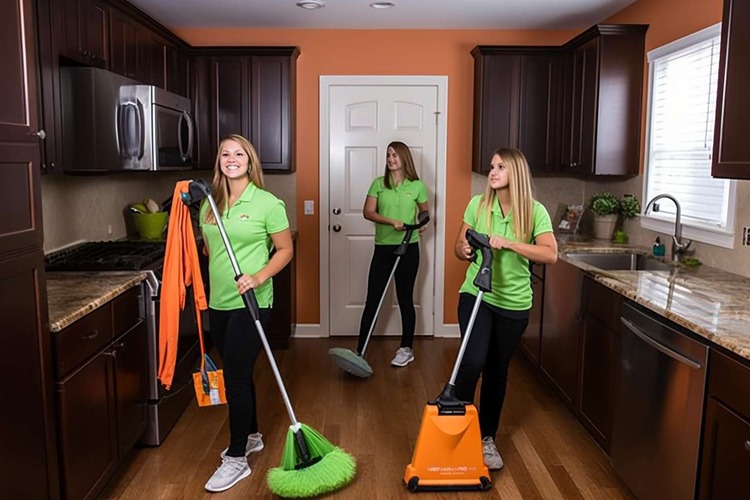Master Home Pest Control: Your Ultimate Guide
Discover how to safeguard your home from unwanted intruders with our comprehensive pest control guide. Learn to identify common household pests, implement effective prevention strategies, and know when to call in the professionals. Transform your living space into a pest-free sanctuary with expert tips and eco-friendly solutions for long-term protection.

Unwelcome Guests: Identifying Common Household Pests
Before waging war against pests, it’s crucial to know your enemy. Let’s explore the most frequent uninvited visitors to our homes:
-
Ants: These industrious insects can invade in large numbers, seeking food and moisture.
-
Cockroaches: Resilient and adaptable, these pests are known carriers of bacteria and allergens.
-
Rodents: Mice and rats pose significant threats to both property and health.
-
Termites: Silent destroyers that can compromise your home’s structural integrity.
-
Bed Bugs: Parasitic insects that feed on blood and are notoriously difficult to eradicate.
-
Spiders: While most are harmless, some species can be venomous and potentially dangerous.
Recognizing these common pests is the first step in developing an effective control strategy.
Fortifying Your Home: Preventive Measures
The best defense against pests is a good offense. Implement these preventive tactics to make your home less inviting to unwanted guests:
-
Seal the Fortress: Conduct a thorough inspection of your home’s exterior, sealing any cracks, gaps, or holes that could serve as entry points.
-
Maintain Pristine Conditions: Regular cleaning, especially in food preparation areas, eliminates attractants that lure pests.
-
Smart Storage Solutions: Keep food in airtight containers and dispose of garbage promptly to reduce pest temptations.
-
Moisture Management: Address leaky pipes and improve ventilation to minimize damp areas that pests find appealing.
-
Declutter Campaign: Remove unnecessary items that could provide hiding spots for pests.
-
Landscape Maintenance: Keep your yard well-maintained, as overgrown vegetation near your home can harbor pests.
By implementing these preventive measures, you create an environment that’s far less hospitable to pests, reducing the likelihood of infestations.
Nature’s Arsenal: Eco-Friendly Pest Control Methods
For those seeking environmentally conscious solutions, consider these natural pest control options:
-
Diatomaceous Earth: This natural powder effectively dehydrates insects with exoskeletons.
-
Essential Oil Barriers: Certain oils, like peppermint and tea tree, act as natural pest repellents.
-
Vinegar Solutions: A simple mixture of water and vinegar can deter various insects, including ants.
-
Strategic Planting: Utilize companion planting techniques to naturally repel pests from vulnerable areas.
-
Neem Oil Applications: This versatile, natural insecticide is effective against a wide range of pests.
While these methods can be effective for minor issues, severe infestations may require more robust interventions.
When to Call the Cavalry: Professional Pest Control Services
There are instances where professional expertise becomes necessary:
-
Persistent Problems: When DIY methods fail to resolve the issue.
-
Widespread Infestations: If pests have established a significant presence throughout your home.
-
Dangerous Species: For potentially harmful pests like venomous spiders or stinging insects.
-
Specialized Treatments: Certain pests, such as termites or bed bugs, often require professional-grade solutions.
-
Preventive Measures: Regular professional inspections can help maintain a pest-free environment.
Professional exterminators bring specialized knowledge, experience, and tools to effectively address various pest challenges.
The Professional Touch: What to Expect
When engaging a professional pest control service, you can typically anticipate:
-
Comprehensive Inspection: A thorough assessment of your property to identify pest issues and potential entry points.
-
Tailored Treatment Plan: A customized strategy based on the specific type and extent of the infestation.
-
Targeted Application: Use of appropriate pesticides or other control methods suited to your situation.
-
Follow-Up Care: Subsequent visits to ensure the effectiveness of the treatment and make any necessary adjustments.
-
Preventive Guidance: Expert recommendations for maintaining a pest-free environment.
-
Service Guarantees: Many reputable companies offer warranties or guarantees for their services.
Maintaining the Upper Hand: Long-Term Pest Control
Keeping your home pest-free requires ongoing vigilance and effort:
-
Regular Self-Inspections: Conduct periodic checks of your home for any signs of pest activity.
-
Seasonal Strategies: Adjust your pest control approach based on seasonal pest patterns in your area.
-
Swift Response: Address any pest sightings or signs immediately to prevent small problems from escalating.
-
Consistent Prevention: Continue implementing the preventive strategies outlined earlier.
-
Professional Partnerships: Consider regular professional pest control services for ongoing protection and peace of mind.
By combining preventive measures, natural methods, and professional services when necessary, you can effectively manage pest control in your home. Remember that different pests may require different approaches, and persistence is key to long-term success in maintaining a pest-free living environment.
With this comprehensive approach to pest control, you can create a safe, comfortable, and pest-free sanctuary for you and your loved ones.






